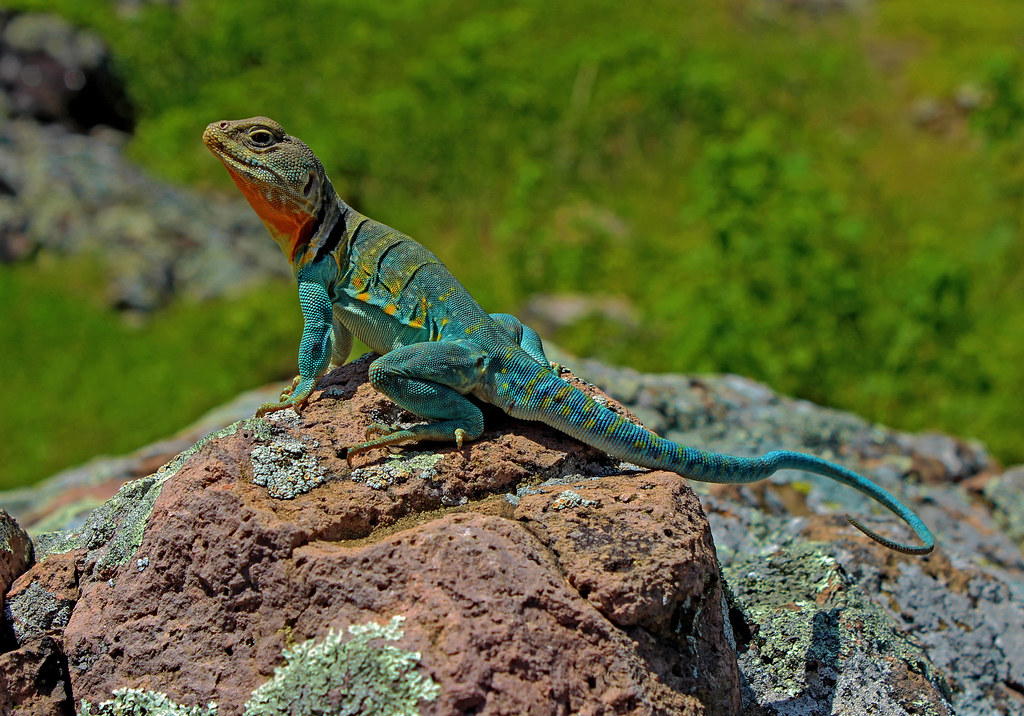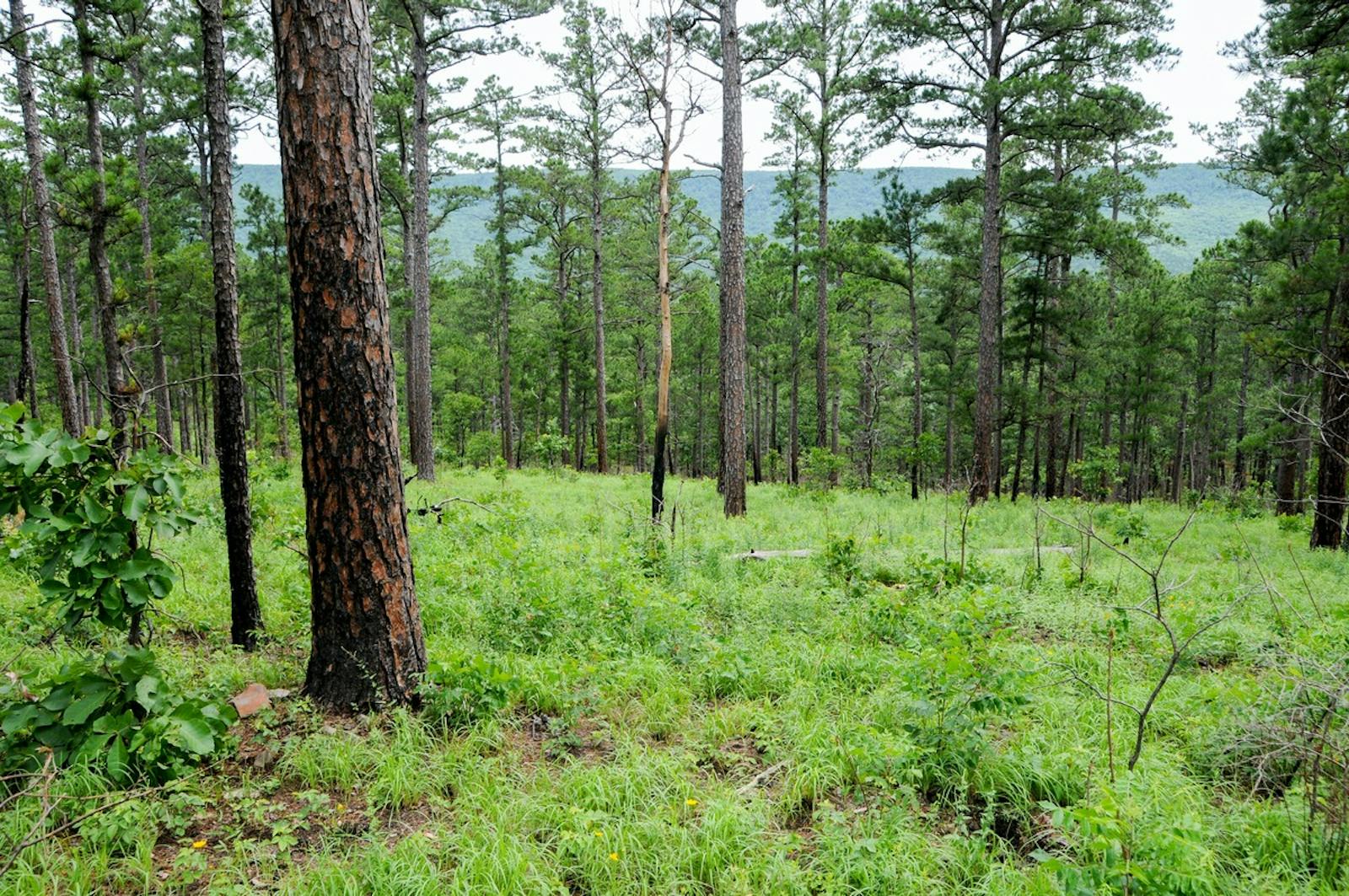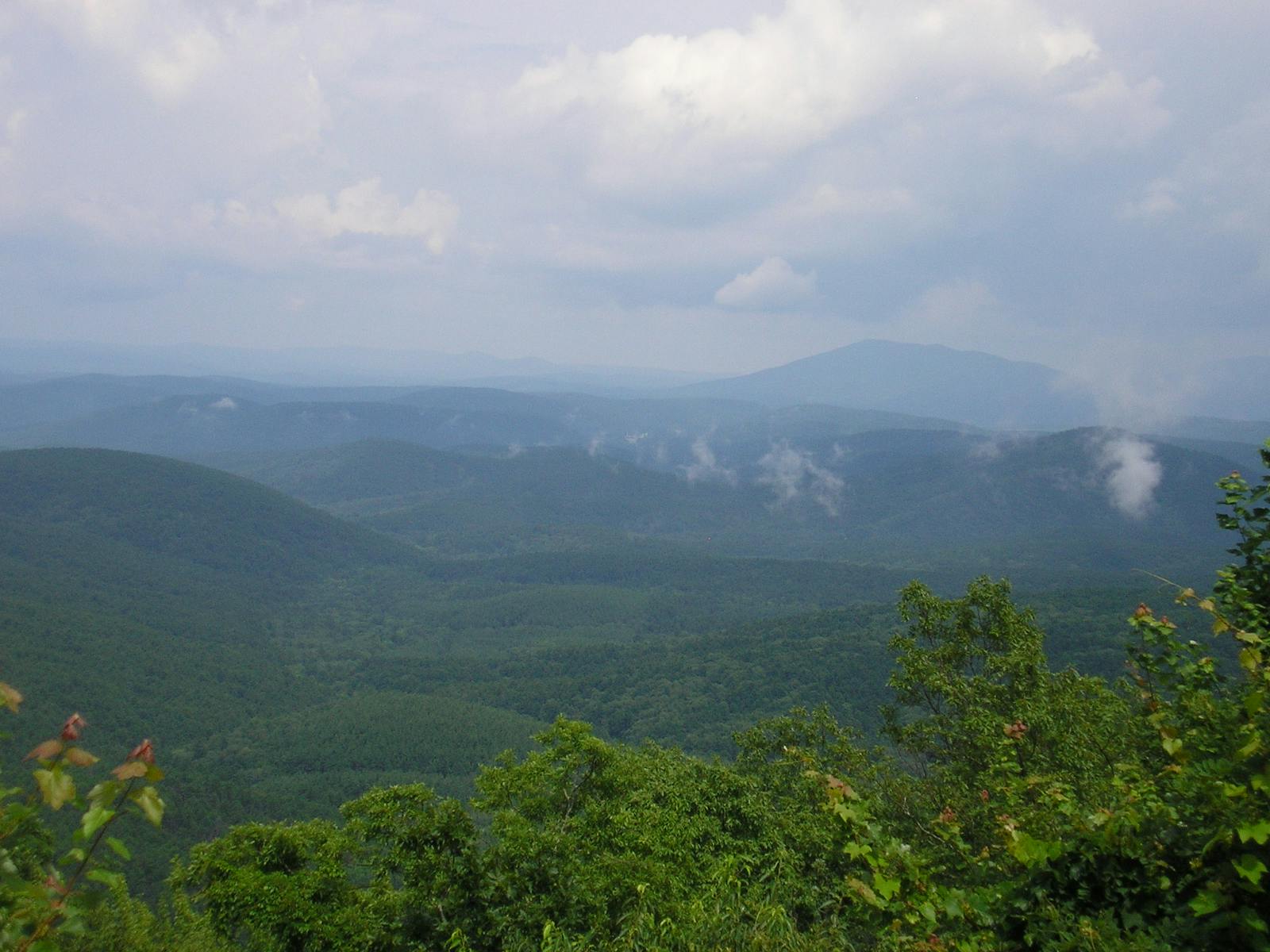Ozark Mountain Forests
The ecoregion’s land area is provided in units of 1,000 hectares. The conservation target is the Global Safety Net (GSN1) area for the given ecoregion. The protection level indicates the percentage of the GSN goal that is currently protected on a scale of 0-10. N/A means data is not available at this time.
Bioregion: Ozarks Mixed Forests (NA22)
Realm: Northern America
Ecoregion Size (1000 ha):
6,965
Ecoregion ID:
341
Conservation Target:
48%
Protection Level:
3
States: United States: AR, OK
The Ozark Mountain Forests ecoregion comprises the Boston Mountains (a deeply dissected plateau that forms the southwestern and highest portion of the Ozark Plateau), the Arkansas (River) Valley, and the Ouachita Mountains. The entire ecoregion is within Arkansas and Oklahoma. This ecoregion is bounded on the north by the Ozark Highlands Mixed Forests, on the east by the Mississippi Lowland Forests, on the south by the Piney Woods, and on the west by the Cross-Timbers Savanna-Woodland ecoregions. Except for the lowlands of the Arkansas Valley, this ecoregion is entirely mountainous and mostly forested. It is very rich in endemic species and constitutes an important transitional zone between eastern and western floras and faunas.
The climate of the Ozark Mountain Forests is humid warm temperate with hot summers and mild winters. The Boston Mountains subregion is underlain by Carboniferous sandstone shale and siltstone with some folding and faulting, but less than in the Ouachita Mountains. The Boston Mountains have higher maximum elevations and less extensive carbonate rocks (limestone and dolomite) than the Ozark Highlands.
The dominant native vegetation is oak-hickory and oak-hickory-pine forest. Northern red oak, southern red oak, white oak, and hickories are major deciduous trees, with shortleaf pine on drier south- and southwest-facing slopes. The Arkansas Valley lies between the Boston Mountains and the Ouachita Mountains, paralleling the Arkansas River, and is underlain by Carboniferous sandstone, shale, and siltstone.
Besides the river floodplain and valley plains, this subregion contains scattered hills and mountains, including Magazine Mountain, with two summits (839 m and 823 m) that make it the highest point in Arkansas and in the entire Interior Highlands region. The native vegetation of the Arkansas Valley is a mix of forest, woodland, savanna, and prairie in the uplands and bottomland deciduous forest on floodplains and lower terraces.
Relatively pristine old-growth post oak savanna occurs at Camp Robinson State Wildlife Management Area, 48 km northwest of Little Rock, Arkansas. Some mesic beech-maple forest occurs in the isolated mountains. Trees of the floodplain forests include bur oak, American sycamore, sweetgum, eastern cottonwood, willows, green ash, pecan, hackberry, and elms. Extensive prairies occurred in the Arkansas Valley Plains and Lower Canadian Hills subregions of the Arkansas Valley.

The flagship species of the Ozark Mountain Forests ecoregion is the eastern collared lizard. Image credit: Peter Paplanus, Creative Commons
The Ouachita Mountains consist of rugged mountains, broad valleys, and the headwaters of several major river systems. The mountains were uplifted some 345 million years ago during the same series of geological events that formed the Appalachian Mountains and the Central Plateau of Texas. Intensely folded and deformed sandstone, shale, and chert are the major bedrock types, overlain by highly weathered, low-fertility soils.
Terrestrial natural communities include montane oak forests dominated by white oak or post oak; dry oak woodlands dominated by post oak, blackjack oak, or scarlet oak; mixed grass or sedge fens; dry acidic glades and barrens; dry mesic oak forest dominated by northern red oak, white oak, and hickories; shortleaf pine-oak forest and woodland; shortleaf pine-bluestem savanna/woodland; calcareous glades and barrens; and novaculite glade and woodland.
The Ouachitas are exceptionally rich in endemic species, including plants such as the maple-leaf oak and Pelton’s rose-gentian, and several species of salamanders, fish, and snails, including the Fourche Mountain salamander, Caddo Mountain salamander, Rich Mountain salamander, Ouachita madtom, Ouachita Mountain shiner, Kiamichi shiner, Ouachita darter, peppered shiner, and Rich Mountain slitmouth snail. The shortleaf pine-bluestem woodlands are reminiscent of longleaf pine savannas of the Coastal Plain, replete with red-cockaded woodpeckers, Bachman’s sparrows, and brown-headed nuthatches. The Ouachitas also hold significant eastern outliers of more western species such as the eastern collared lizard (on sandstone glades), western diamondback rattlesnake, and greater roadrunner.
Only 12% of the Ozark Highlands Mixed Forests ecoregion is protected, but some 36% of the landscape outside protected areas is basically intact. Priority conservation actions for the next decade are to: 1) greatly increase federal, state, and local acquisition of conservation lands; 2) restore natural fire regimes and other natural processes; and 3) increase awareness of the natural history and conservation needs of this ecoregion among the local people.
Citations
1. Ouachita Mountains Ecoregional Assessment. 2003. The Nature Conservancy. https://bit.ly/3b8zGP1
2. Boston Mountains. https://en.wikipedia.org/wiki/Boston_Mountains
3. Arkansas Valley. https://en.wikipedia.org/wiki/Arkansas_Valley_(ecoregion)




